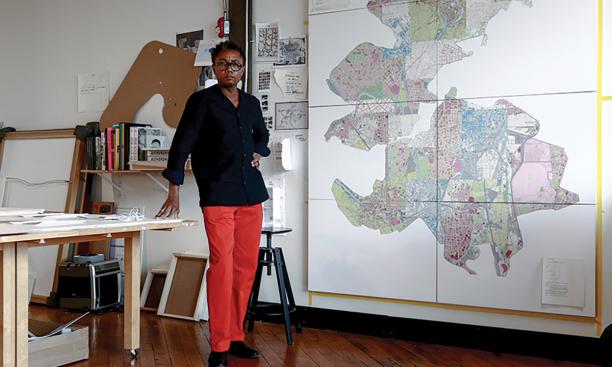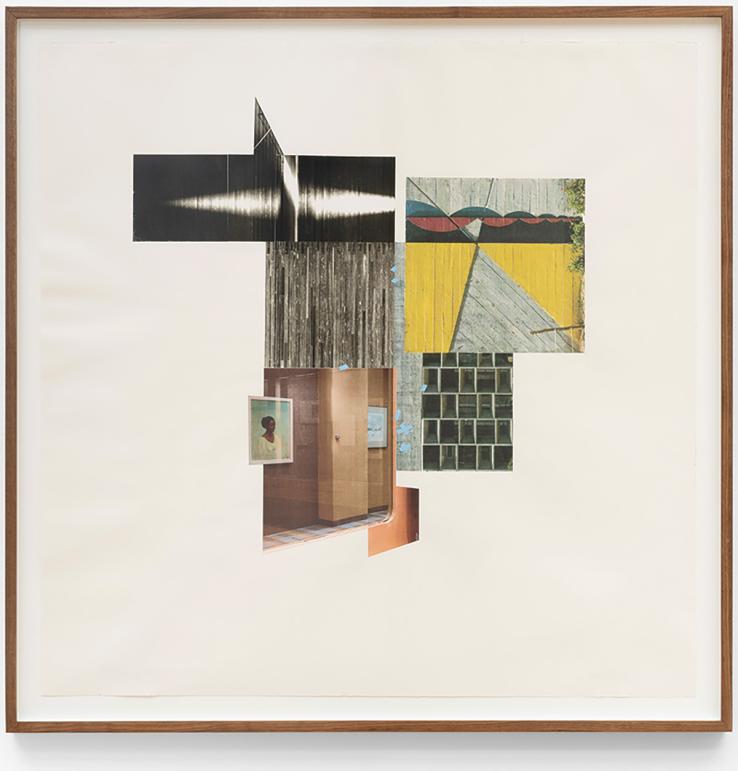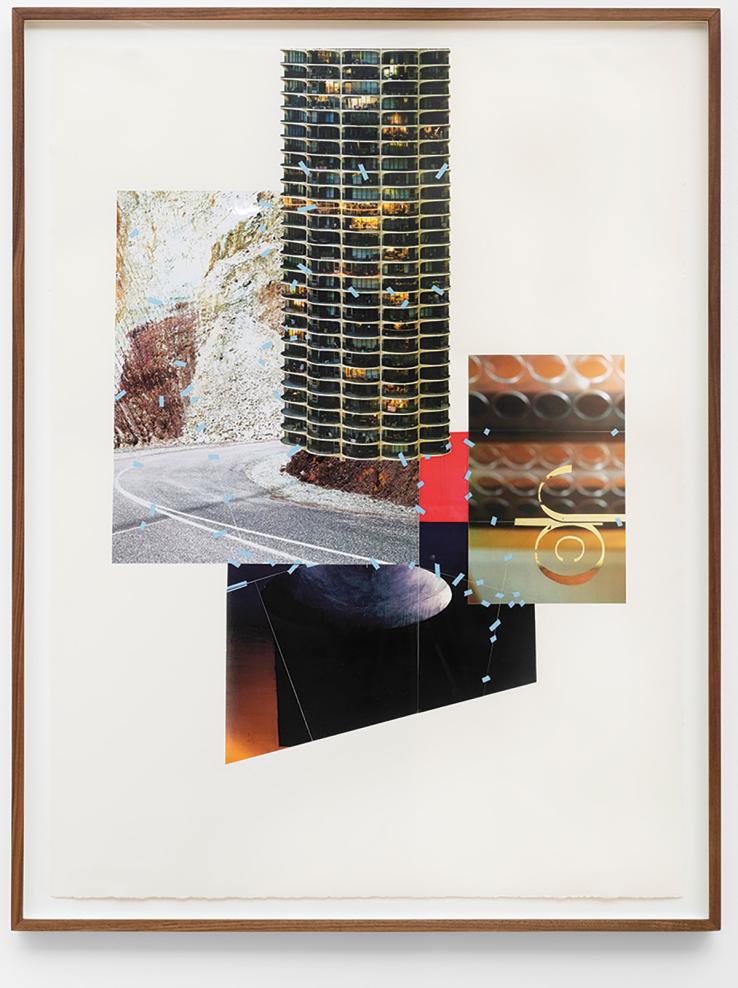
Marshall Brown sits at a work table in his second-floor studio in Hamilton, New Jersey. With an X-Acto knife, he incises narrow strips from one of the several images glued to the large sheet of paper on the table. Pieces of blue artist tape dot the work, a collage he’s in the process of making.
Brown crafts his pieces by combining photographs of buildings, spaces, and architectural elements that he carefully cuts so that they almost appear to flow into one another, though the seams are visible. The collages are beautiful and mysterious, filled with surprising juxtapositions. They’re how Brown, who was promoted to professor of architecture at Princeton in the fall, thinks about his field, and they’ve won significant attention as objects of art in their own right.
Collage, Brown says, “is an active way of absorbing and thinking about architecture. You have to spend a lot of time looking at the content of the images.” The practice of collage has an important if often overlooked role in architecture, says Brown, who joined Princeton’s faculty from the Illinois Institute of Technology in 2018. It’s a topic covered in his class Collage Making in Architecture. “People don’t think of collage and architecture the way they think of drawing and modeling, but collage has been there alongside those other two in many advanced architectural practices” for more than a century.

It’s become the focus of his work because collage allows him to explore “how architectural imagery and photography infect our imaginations and to make something new from that investigation,” Brown adds.
Last year, the Santa Barbara Museum of Art had an exhibition of Brown’s collages. Collage is also an important part of the three plans set out in his 2022 book Recurrent Visions: The Architecture of Marshall Brown Projects, one of which is being shown at the San Francisco Museum of Modern Art (SFMOMA) through May 27. Brown has even turned one of his collages into Ziggurat — a large structure Chicago magazine described as a “tree house designed by Picasso” — that’s on display at the Crystal Bridges Museum of American Art in Bentonville, Arkansas.
The process mirrors how architects design their buildings, Brown said in an online discussion of Ziggurat, which is based on a collage he composed from images of buildings by Frank Gehry, Peter Eisenman, and Zaha Hadid, all major architects of the last 50 years. “I think influence is unavoidable,” Brown added. “I think all architects have their influences; they mostly just hide them. I’m interested in what can happen when influence is made explicit.”
A New Jersey native, Brown became an architect in New York City after college. In 2004, Letitia James, then a member of the New York City Council, asked Brown to help develop a plan for the Vanderbilt Rail Yard.
In working on that project, Brown says, “I heard people say that they needed and wanted a vision for what their neighborhood could be …. That was a surprise to me, because it was contrary to what I had been taught to expect.”
Brown had worked in collage before, but as he finished creating a plan, drawings, and a model for the Brooklyn site, he made a large-scale collage inspired in part by a 1922 design for a building in Berlin by the architect Ludwig Mies van der Rohe.
“I saw it for the first time in person and remember being struck by the scale of it,” Brown says of Mies van der Rohe’s work.
Collage is an important part of Brown’s two other urban projects, which with the Brooklyn project are laid out in his book Recurrent Visions. He designed a 2.7-million-square-foot campus for a school in Detroit for the U.S. pavilion at the 2016 Venice Architecture Biennale; that work is now being exhibited at SFMOMA.
For the last decade, Brown has been developing a large-scale plan for the South Side of Chicago that he expects to continue working on for the rest of his career. Brown calls the project “Smooth Growth Urbanism,” a term he coined to challenge the assumptions that cities must always continue to construct new buildings and should strive for high population density. In both the Chicago and Detroit projects, Brown suggests ways architects can design in cities that have seen deindustrialization and population decline.
For the last several years, he’s also worked on a series of collages called Prisons of Inventions, a translation of Carceri d’Invenzione, a famous series of etchings by the 18th century artist Piranesi.
Even when they haven’t been built, such projects have often been critical in the history of architecture, says Brown, who shows his work at Western Exhibitions gallery in Chicago. “The bigger impact architects have had is with the images we create” rather than with the buildings they design. “Mayors, popes, and developers decide the reality, but we create the visions of what is possible, which is much bigger and more vital.”

